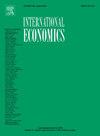Regional heterogeneity in the impacts of drought in China
引用次数: 0
Abstract
Droughts pose a critical global challenge, threatening food security, water resources, and economic stability. In large, ecologically diverse countries like China, understanding how droughts disproportionately affect economies at both national and subnational scales is vital, as regional vulnerabilities can exacerbate broader socioeconomic disruptions. However, previous research has rarely analyzed drought impacts comprehensively at both national and regional levels, limiting the ability to capture the full extent of economic heterogeneities and design effective mitigation strategies. This study examines regional heterogeneities in drought impacts across China, aiming to identify how different regions respond to drought-induced shocks and inform targeted policy interventions. Using a Structural Vector Autoregression (SVAR) model with sign restrictions, the analysis reveals that while droughts modestly reduce national output, regional impacts vary significantly. Areas heavily reliant on agriculture, those with diverse vegetation ecosystems, and regions with underdeveloped infrastructure face the most severe economic consequences. Supply-side sectors, particularly agriculture, suffer significant productivity losses, driving sharp increases in national food prices. Accommodation and transportation costs also show prolonged inflationary trends, indicating persistent secondary economic effects. To enhance resilience, this study advocates for region-specific strategies in resource allocation and policy-making. By aligning policies with each region's unique economic vulnerabilities and ecological traits, governments can more effectively mitigate the adverse effects of climate-induced droughts.
中国干旱影响的区域异质性
干旱是一项重大的全球挑战,威胁着粮食安全、水资源和经济稳定。在像中国这样生态多样的大国,了解干旱如何在国家和地方层面对经济产生不成比例的影响至关重要,因为区域脆弱性会加剧更广泛的社会经济破坏。然而,以往的研究很少在国家和区域两级全面分析干旱的影响,从而限制了充分了解经济异质性和设计有效缓解战略的能力。本研究考察了中国各地干旱影响的区域异质性,旨在确定不同地区如何应对干旱冲击,并为有针对性的政策干预提供信息。利用带有符号限制的结构向量自回归(SVAR)模型分析表明,干旱虽然会适度减少国家产出,但区域影响差异很大。严重依赖农业的地区、植被生态系统多样的地区以及基础设施欠发达的地区面临的经济后果最为严重。供给侧部门,特别是农业,遭受了巨大的生产力损失,推动了国家粮食价格的急剧上涨。住宿和交通费用也显示出长期的通货膨胀趋势,表明持续的次级经济影响。为了增强韧性,本研究提倡在资源分配和政策制定方面采取有区域特色的战略。通过将政策与每个地区独特的经济脆弱性和生态特征相结合,政府可以更有效地减轻气候引起的干旱的不利影响。
本文章由计算机程序翻译,如有差异,请以英文原文为准。
求助全文
约1分钟内获得全文
求助全文
来源期刊

International Economics
Economics, Econometrics and Finance-Economics, Econometrics and Finance (all)
CiteScore
6.30
自引率
0.00%
发文量
74
审稿时长
71 days
 求助内容:
求助内容: 应助结果提醒方式:
应助结果提醒方式:


